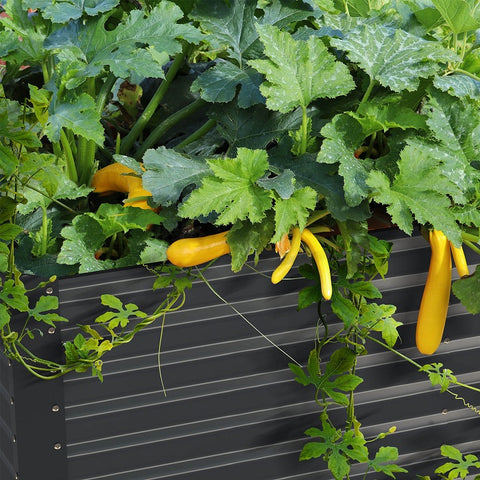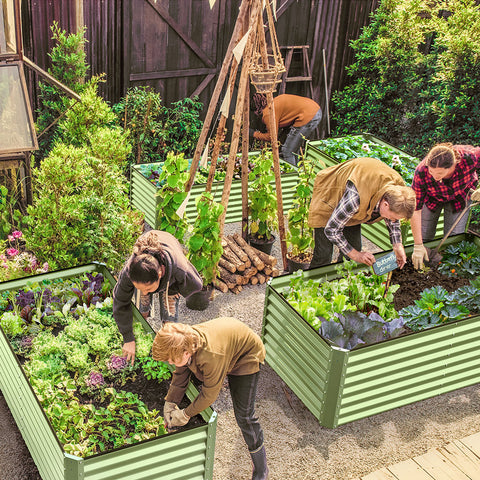This is the second part. Let's move on to simple vegetables that gardens can grow. The following content also has some reference value for raised garden beds.
- Charcoal
Swiss beets are one of the least known but most beneficial vegetables. This vegetable is rich in vitamin C, folic acid, iron, and potassium. Swiss beet is a cold resistant plant that can be grown in early spring or summer. You can even plant beet seeds on an elevated garden bed. This vegetable is used in fish dishes, salads, and even eaten raw.
- Kolabi
Kohlabi is becoming increasingly popular in the United States. It is a high source of thiamine, folate, magnesium, and phosphorus.
After the last frost, it can be planted immediately and replanted in early summer. Planting Kohlabi on a raised garden bed allows you to plant it twice a year.
- Carrots
If you follow my instructions, carrots are very easy to grow. They are important sources of vitamin A, K, and potassium.
Usually, you plant carrots one month after the last spring frost. But in the raised garden, you can plant a few weeks before the last frost.
- Broccoli
Broccoli is another vegetable that is very suitable for gardeners to eat. It is an important source of protein, thiamine, and vitamin E.
Broccoli is a cold resistant plant that can be planted immediately after the last frost. In a garden, it can even be planted more than once.
- Beets
Beet may not be a favorite plant for gardeners, but its nutritional content is high. It is a good source of fiber, folic acid, potassium, and vitamin C.
Beets can be planted immediately after the last spring frost and replanted in early summer. This makes it very suitable for raised garden beds.
- Kale
Kale has quickly become one of the most popular vegetables in the world. This vegetable contains fiber, protein, almost all vitamins, and iron.
Kale is a cold resistant vegetable that is planted immediately after the last spring frost and replanted in early summer. In the raised garden, it is one of the few vegetables that can be grown year-round.
- Eggplant
Eggplant is one of the most abundant vegetables on this list. They are rich in fiber, potassium, and vitamin C.
They should be planted at least one month after the last spring frost. Generally speaking, this is one of the most difficult plants to plant, but it thrives on raised garden beds.
- Green beans
Although there are many beans on the market, green beans are the best choice for garden beds. Green beans are rich in folic acid, fiber, and potassium. This vegetable should be planted one month after the last spring frost and replanted in early summer. On a raised garden bed, it can grow vertically.
- Sweet Peas
How delicious are sweet peas? They are also very nutritious. These vegetables are rich in protein, riboflavin, and niacin. Usually, you plant sweet peas about a month after the last frost and replant them in early summer. This is also a great plant that can grow in your garden in late winter or early spring.
- Cauliflower
Broccoli is very similar to broccoli in terms of cultivation, care, and harvesting. It is an excellent source of fiber and various B vitamins. Cauliflower can be planted less than a month after the last spring frost. Planting it in a raised garden can protect it from pests and fungi.
Although the focus of this article is on planting simple vegetables on raised garden beds, I also recommend planting a large amount of vanilla on raised garden beds. For example, basil, leeks, fennel, celery. In addition to vegetables and herbs, there are also very easy to grow fruits in the raised garden. For example, strawberries, cherry bushes, blueberries









